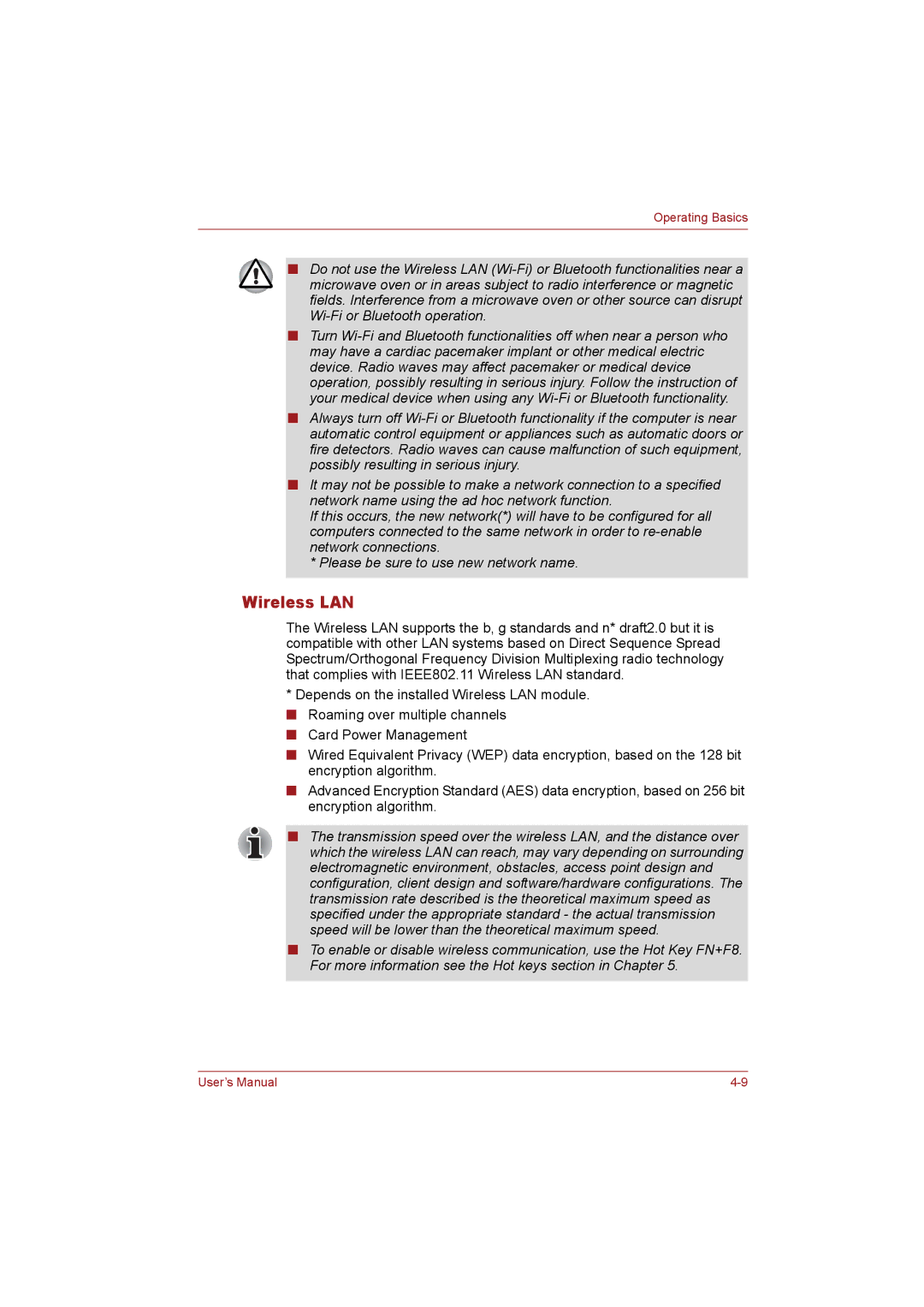
Operating Basics
■Do not use the Wireless LAN
■Turn
■Always turn off
■It may not be possible to make a network connection to a specified network name using the ad hoc network function.
If this occurs, the new network(*) will have to be configured for all computers connected to the same network in order to
*Please be sure to use new network name.
Wireless LAN
The Wireless LAN supports the b, g standards and n* draft2.0 but it is compatible with other LAN systems based on Direct Sequence Spread Spectrum/Orthogonal Frequency Division Multiplexing radio technology that complies with IEEE802.11 Wireless LAN standard.
*Depends on the installed Wireless LAN module. ■ Roaming over multiple channels
■ Card Power Management
■Wired Equivalent Privacy (WEP) data encryption, based on the 128 bit encryption algorithm.
■Advanced Encryption Standard (AES) data encryption, based on 256 bit encryption algorithm.
■The transmission speed over the wireless LAN, and the distance over which the wireless LAN can reach, may vary depending on surrounding electromagnetic environment, obstacles, access point design and configuration, client design and software/hardware configurations. The transmission rate described is the theoretical maximum speed as specified under the appropriate standard - the actual transmission speed will be lower than the theoretical maximum speed.
■To enable or disable wireless communication, use the Hot Key FN+F8. For more information see the Hot keys section in Chapter 5.
User’s Manual |
